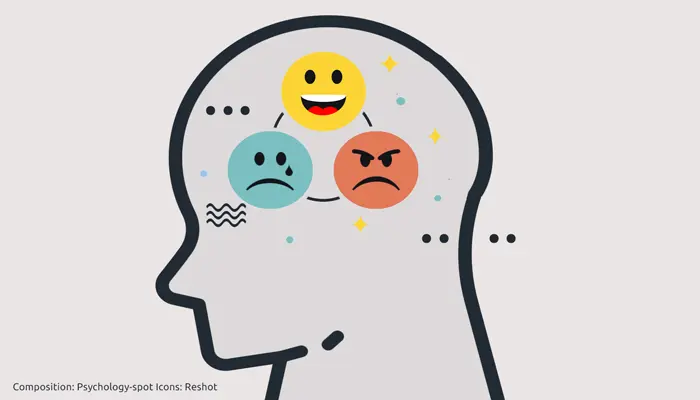
From childhood we are taught – at least most of us – to treat others kindly. They teach us to respect them, not to be rude, and to avoid big words. They teach us to say “thank you” and “please”. They teach us to apologize when we’re wrong and to forgive when others are wrong. We have internalized those social norms.
However, no one teaches us to relate to ourselves. No one teaches us to speak to ourselves in the proper way. Nobody teaches us to treat ourselves with the same kindness and respect with which we usually treat others. As a result, it’s not surprising that sometimes our inner dialogue becomes our worst enemy and causes many of the emotional problems we suffer as adults.
The incredible power of the inner dialogue
“What a fool I am! How did I not notice it?”
“I don’t have character, why wasn’t I able to tell him no?”
“I’m a failure, I don’t do anything right.”
Those are just some of the phrases you can use when talking to yourself. Normally that speech takes the form of reproaches, recriminations, destructive criticism and negative judgments about yourself. They often trigger when you feel frustrated, angry, or sad, so you redirect those negative feelings onto yourself, blaming yourself for what you’ve done and what you haven’t done.
Actually, it is a habit that we put into practice often. We use the enormous power of the inner dialogue as a weapon against ourselves, to put ourselves down and blame ourselves for our suffering, especially when we feel trapped, lost, and confused. When we don’t know what to do, we often redirect all that negativity back at us. Just at the moments when we are most vulnerable and in need of compassion, we become our own worst enemy.
In fact, the way you talk to yourself can determine your level of suffering or well-being. The way you treat yourself can fill you with energy, give you the dose of motivation you need, and make you feel good, increasing the chances of success or, on the contrary, it can make you feel miserable and a failure, so that you will start at a disadvantage in any project that you propose to yourself.
Language has enormous referential power. For example, if you say “table”, the image of a table will immediately come to mind. Usually that image is neutral, which means that it is not linked to emotions, but there are many other words that trigger very strong emotional reactions, such as “success” or “failure”.
There are words that generate a cascade of emotions with their subsequent trail of connected thoughts. For example, see how you react and what you think when you hear the word “vacation” or the word “rotten”. You are likely to react very differently.
The way you talk to yourself activates reactions of this type, although many times you are not aware of it. Your internal monologue unleashes powerful emotional reactions and gives rise to endless negative thoughts. It is no coincidence that a study carried out at the University of Durham discovered that some types of inner dialogue are related to the appearance of psychological disorders such as anxiety.
However, the most worrying thing is that all those adjectives that you use to describe yourself, whether you tell yourself “I’m great” or “I’m a disaster”, end up forming part of your identity. They become labels that you attach to your self-concept, a kind of prism through which you see yourself, make your decisions, and feel.
If every time you make a mistake, you repeat to yourself that you are not capable of doing anything or that you are stupid because you are always wrong, it is likely that you will end up generalizing that perception, in such a way that it will become a self-fulfilling prophecy. That’s why it’s important that you pay attention to the way you talk to yourself, so you don’t end up limiting or boycotting yourself.
Learn to speak to yourself in a more understanding and positive way
Our stream of thought is so active that we say the equivalent of 4,000 words per minute to ourself. Those words have a huge impact on the way we feel, perceive ourselves and even the way we see the world and react to what happens to us.
We have two options: enter the loop of a negative internal monologue every time something goes wrong for us to feel worse and worse, or change the way we talk to ourself by displaying a kinder and more compassionate speech.
It should be clarified that it is not a question of falling into excessive optimism that leads us to lose contact with reality, but of developing a more positive discourse. For example, instead of telling yourself: “I’m a failure” you can tell yourself: “I’ll try to do better next time” or “this time I made a mistake, I’ll try again paying more attention.”
It is about trying to be kinder to you, if you admit your mistake and make an effort to learn the lesson to improve next time, you will surely feel better and you will increase your chances of success.
The good news is that you can train your inner dialogue. No matter how ingrained it may be, you can stop this flow of negative thoughts by asking yourself: “How would I tell a child what I am saying to myself? And to another person?” It is not about turning a blind eye to mistakes or failures by adopting a complacent attitude, but about implementing a more constructive dialogue that helps you become the person you want to be, instead of constantly torpedoing your efforts.
Take a moment to observe the words you say to yourself and their effects: are you too hard on yourself? Do you allow yourself to fail? What level of demand do you impose on yourself? How do you react when you’re wrong? How do your words make you feel?
It is simply about treating yourself with more kindness and affection. With more respect and understanding. It is about treating yourself with the same compassion and tenderness as a small child. After all, we all carry an inner child that needs attention, care and understanding.
When you talk to yourself, reflect on the message you are sending yourself. Ask yourself how that thought helps you get better or feel better. If it blocks you or makes you feel worse, it’s time to change it.
Sources:
Jones, S. & Fernyhough, M. (2011) The Varieties of Inner Speech: Links Between Quality of Inner Speech and Psychopathological Variables in a Sample of Young Adults. Consciousness and Cognition; 20 (2011): 1586–1593.
Korba, R. (1990) The Rate of Inner Speech. Perceptual and Motor Skills; 71: 1043–1052-




Leave a Reply